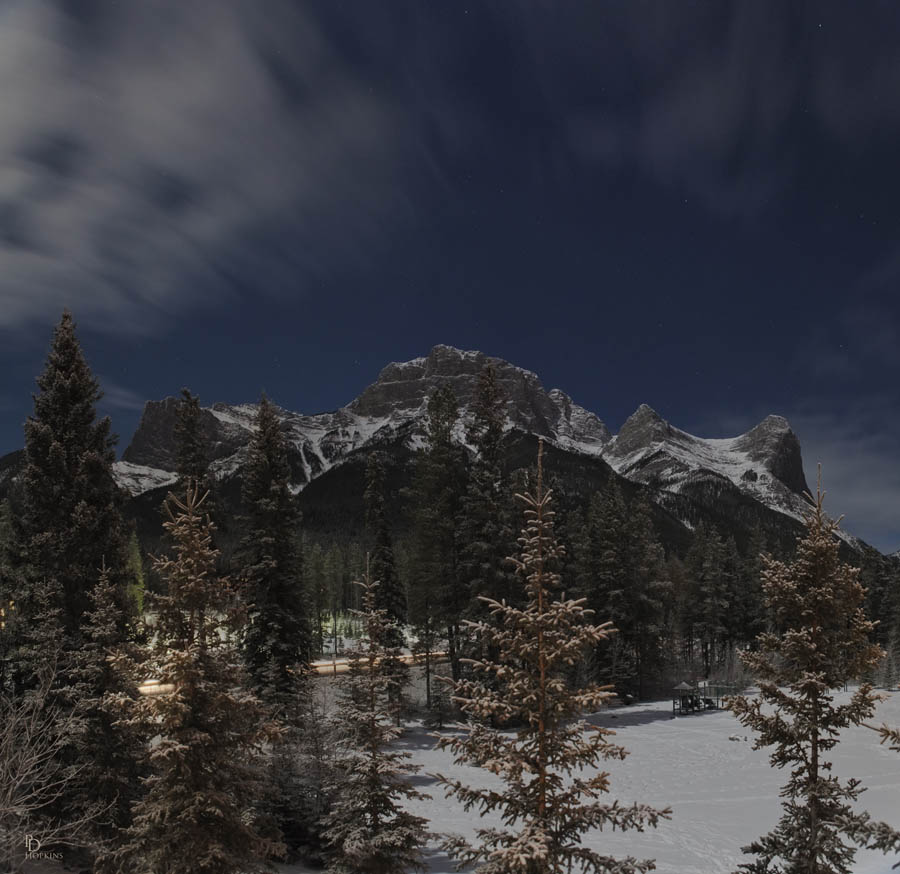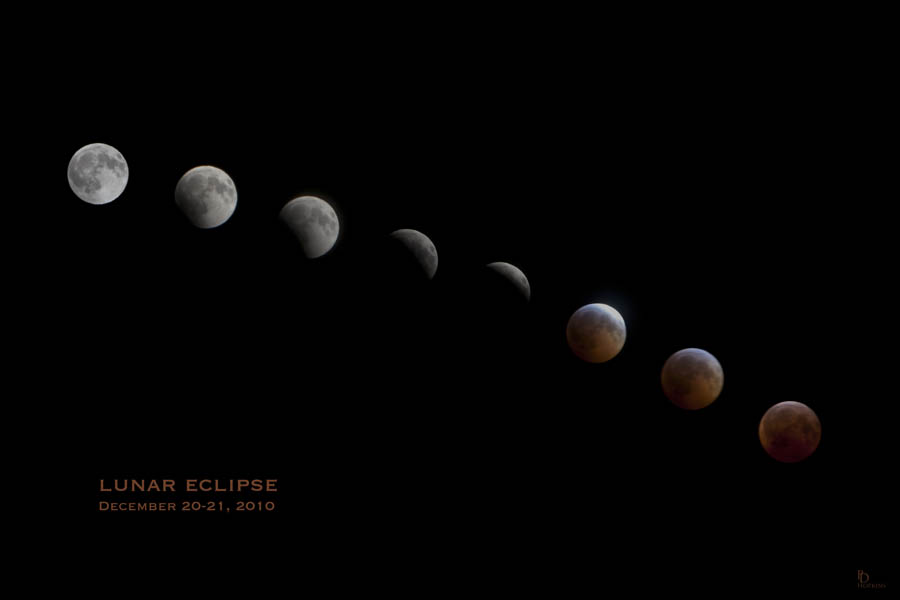I had a late night yesterday, staying up to observe and photograph the lunar eclipse. A lunar eclipse occurs when the earth is between the sun and the moon, blocking sunlight from reaching and being reflected by the moon. Lunar eclipses occur fairly often, but this one was unique in that it was the first to coincide with the winter solstice since 1638. This coincidence will not occur again for another 456 years.
The the sky was clear, the moon was full and it cast a brilliant glow across the entire Bow Valley. I took the following picture at 10:15 pm, about an hour before the eclipse began.

This shot was taken from our rear deck. You can see (from l-r) Ship’s Prow, the Canmore Wall, Miner’s Peak and Ha Ling Peak, glowing in the moonlight. It was interesting to note how much darker it became when the moon was in total eclipse.
The partial eclipse began on December 20 at 11:32 p.m. MST when the full moon began to enter the shadow of the Earth.
Over the next hour, the Earth’s shadow darkened more and more of the moon until it was completely engulfed in our planet’s shadow. Totality began at 12:40 a.m. (after midnight, now on Dec. 21) and lasted 73 minutes. During totality the moon grew increasingly red until mid-eclipse when the moon looked darkest and reddest, at 1:16 a.m. The total eclipse ended at 1:53 a.m., when the moon began to slide out of the Earth’s shadow and began to brighten again. The partial eclipse ended at 3:01 a.m.
The following picture is a composite of eight pictures I took over a period of 1 hour and forty-five minutes, beginning with the onset of the partial eclipse at 11:32 pm and ending at mid-eclipse at 1:15 am. This is 1/2 of the entire duration of the eclipse; the second half would be similar but in reverse. A combination of my drowsiness and the freezing cold convinced me that I had seen all I needed.

The photography was an interesting challenge because of the significant change in light that occurred over the course of the eclipse. As the photo of the mountains attests, it was very bright before the onset of the eclipse. By mid-eclipse it was very dark, not unlike any night without moonlight.
I began with a small aperture, f11.0 and a shutter speed of 1/400 sec. for the first photo, on the left. A very short exposure is needed to prevent the moon from over-exposing. I progressively decreased the shutter speed as the moon darkened and by the 5th picture from the left, I increased the aperture to f9.0 to allow sufficient light into the camera. By the time I took the final shot, at mid-eclipse (far right), I had increased the shutter speed to 6 seconds.
The composite was put together using Photoshop, using a selection from the 45 shots I took over the period of 105 minutes from onset of the eclipse until mid-eclipse. It is intended to show the change in the moon’s appearance as it travels through the shadow of the earth during the eclipse.

Excellent presentation, Peter! I had been entertaining friends and when they left, I had a look at about 11.30. It was fairly clear but starting to cloud up. I set up my camera inside the house and with a 200mm lens took a series of pictures until at 12.38, the clouds forced me to stop. I did manage to get a few pictures I liked but nothing like yours! Thanks for sharing.
Now that is very cool. It was cloudy here in the GTA. I’d like to see some of the lights decorations of Canmore homes and one of Rolande’s Charlie Brown Christmas tree with all the trimmings.
Pete:
Great sequence! Deb & I were visiting Valley Forge and with the 2 hr time diff with Alberta i was fast asleep! Looks like I missed a good one as it was over cast here!!!